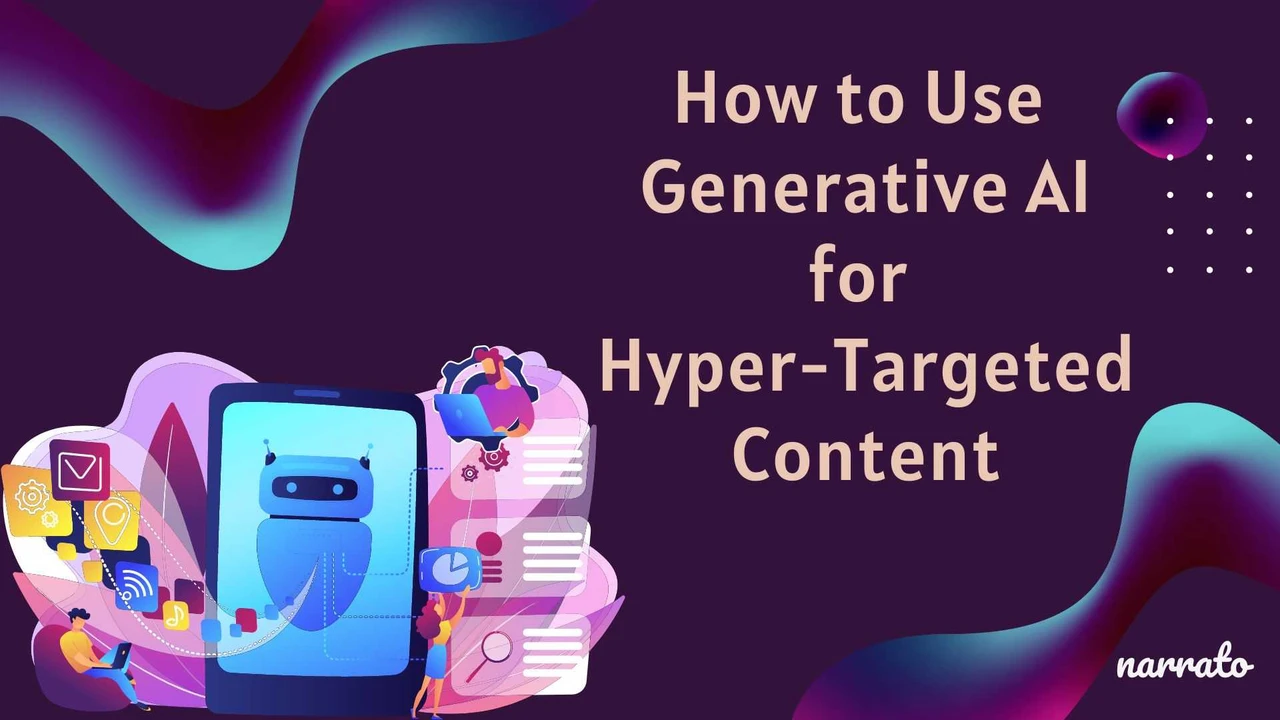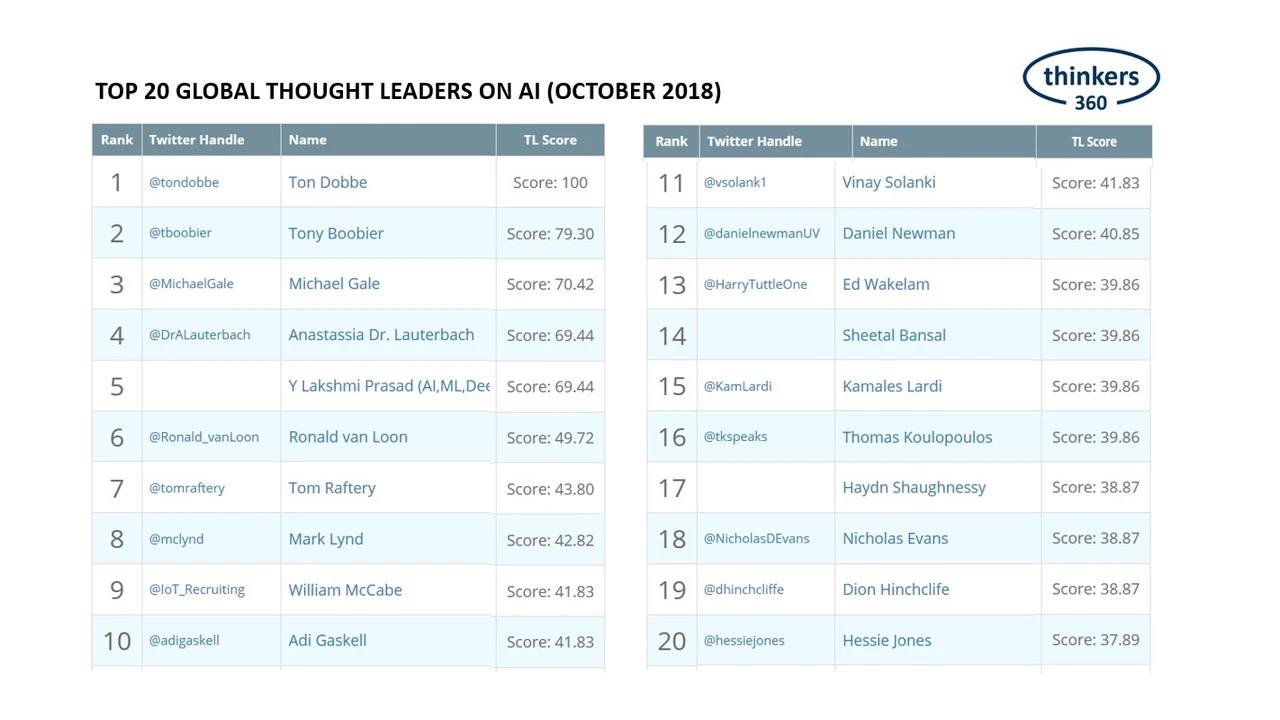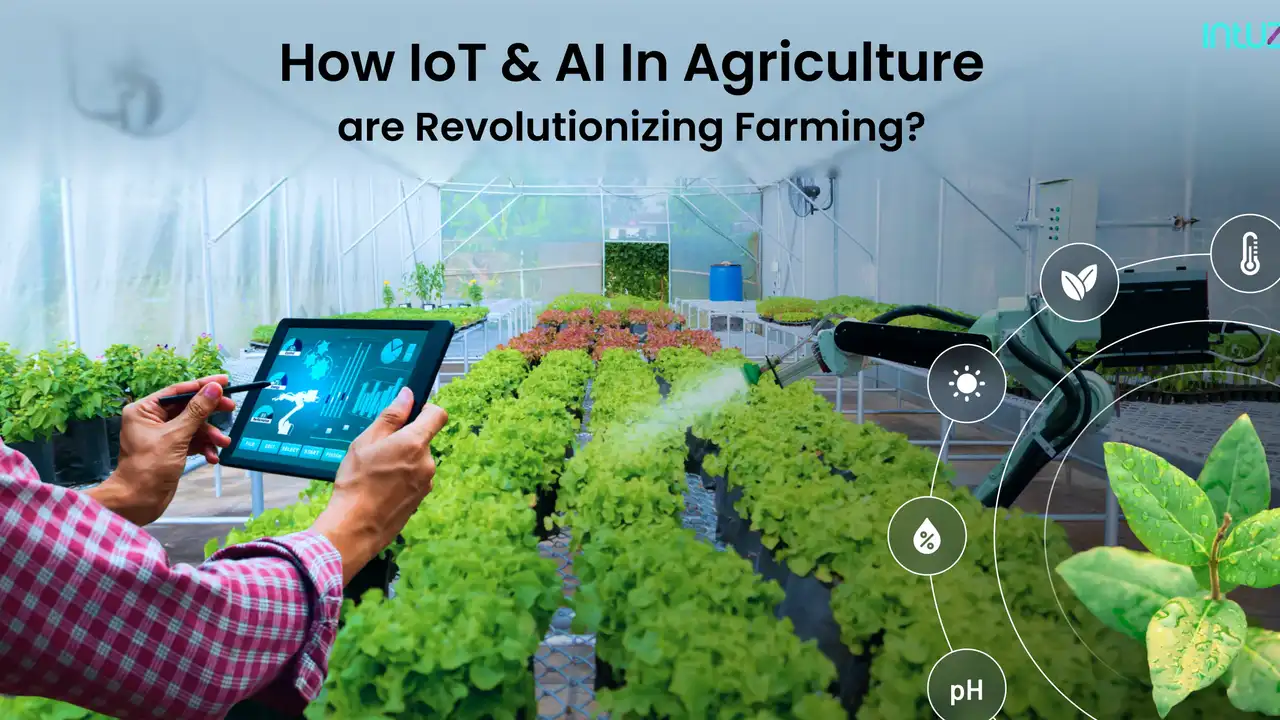AI and the Metaverse: Creating Immersive Digital Worlds
AI Blogs: Dive into the minds of top AI experts and thought leaders. Discover recommended AI blogs, stay updated on the latest trends, and gain valuable insights.

Why Follow AI Blogs The Importance of Staying Informed
In the rapidly evolving world of Artificial Intelligence (AI), staying informed is not just beneficial, it's essential. AI is transforming industries, impacting our daily lives, and pushing the boundaries of what's possible. Following AI blogs allows you to keep pace with these changes, understand emerging technologies, and anticipate future trends. Think of it as your direct line to the pulse of the AI revolution. You'll be able to see how AI is being applied across different sectors, the challenges and opportunities it presents, and the ethical considerations that need to be addressed.
Think about it: new algorithms, frameworks, and applications are being developed practically every day. If you're *not* actively seeking out information, you're going to fall behind. AI blogs provide a curated stream of knowledge, filtering out the noise and delivering the most relevant and insightful content. This is especially crucial for professionals working in AI, as well as students, researchers, and anyone with a general interest in the field. The knowledge you gain from these blogs can inform your decisions, spark new ideas, and help you contribute to the AI community.
Key Benefits of Reading AI Blogs: Unlocking Knowledge and Insights
Reading AI blogs offers a multitude of benefits. Here's a breakdown of some of the key advantages:
- Staying Updated on Latest Trends: AI is a dynamic field. Blogs are excellent sources for learning about the newest advancements, research breakthroughs, and emerging applications.
- Learning from Experts: AI blogs are often written by leading researchers, developers, and industry professionals who share their expertise, insights, and experiences.
- Gaining Practical Knowledge: Many blogs offer tutorials, case studies, and practical advice on how to implement AI solutions in real-world scenarios.
- Discovering New Tools and Technologies: Blogs often review and recommend new AI tools, frameworks, and platforms that can help you improve your workflow and achieve better results.
- Expanding Your Network: Engaging with AI blogs can connect you with other professionals and enthusiasts in the field, fostering collaboration and knowledge sharing.
- Ethical Considerations: Top AI blogs delve into the ethical implications of AI, promoting responsible development and deployment.
Top AI Blogs You Should Be Following: Your Guide to the Best Resources
Alright, let's get to the good stuff! Here are some of the top AI blogs that I highly recommend you check out. This list is a mix of academic, industry-focused, and general interest blogs, so there's something for everyone.
Distill: Academic Rigor and Visual Clarity
Distill is a unique academic journal that focuses on making AI research accessible and understandable to a wider audience. They use interactive visualizations and clear explanations to break down complex concepts, making it easier to grasp the underlying principles of AI algorithms and techniques. It's a great resource if you want to go beyond the headlines and delve into the technical details.
OpenAI Blog: Directly from the Source
The OpenAI Blog is the official blog of OpenAI, one of the leading AI research organizations in the world. Here, you'll find announcements about their latest research projects, updates on their AI models (like GPT-3 and DALL-E), and insights into their approach to AI safety and governance. Following this blog is like getting a sneak peek into the future of AI.
Google AI Blog: Innovation and Application
Similar to OpenAI, the Google AI Blog showcases Google's cutting-edge AI research and its applications across various Google products and services. You'll find articles on topics ranging from natural language processing to computer vision to robotics. This blog is particularly useful if you're interested in seeing how AI is being used to solve real-world problems at scale.
DeepMind Blog: Pushing the Boundaries of AI
DeepMind, another leading AI research organization (now part of Google), focuses on developing general-purpose AI algorithms that can learn and solve complex problems. Their blog features articles on their groundbreaking research in areas such as reinforcement learning, game playing, and scientific discovery. DeepMind's work is at the forefront of AI research, and their blog is a great way to stay informed about their latest breakthroughs.
Towards Data Science: A Community-Driven Platform
Towards Data Science is a Medium publication that features articles on a wide range of topics related to data science, machine learning, and AI. It's a community-driven platform, meaning that anyone can contribute, so you'll find a diverse range of perspectives and expertise. This blog is a great resource for learning about practical data science techniques, exploring different AI applications, and connecting with other data scientists and AI enthusiasts.
The Batch by Andrew Ng: Practical AI Insights
The Batch is a weekly newsletter curated by Andrew Ng, a renowned AI expert and co-founder of Coursera. In each issue, Andrew shares his insights on the latest AI news, trends, and research, along with practical advice on how to apply AI in your own work. This newsletter is a concise and informative way to stay up-to-date on the most important developments in AI.
Lex Fridman Podcast: In-Depth Conversations with AI Luminaries
While technically a podcast, Lex Fridman's show frequently features in-depth conversations with leading AI researchers, entrepreneurs, and thinkers. These conversations often delve into the philosophical, ethical, and societal implications of AI, providing a broader perspective on the field. It's a great way to hear directly from the people shaping the future of AI.
Specific AI Products and Their Blogs: Staying on Top of Product Development
Beyond general AI blogs, it's also helpful to follow blogs associated with specific AI products and platforms. This gives you direct insight into product updates, use cases, and best practices. Here are a few examples:
TensorFlow Blog: The Go-To Resource for TensorFlow Developers
If you're working with TensorFlow, Google's open-source machine learning framework, the TensorFlow Blog is a must-read. You'll find tutorials, examples, and announcements about new features and updates. This blog is essential for staying up-to-date on the latest developments in the TensorFlow ecosystem.
PyTorch Blog: News and Updates for PyTorch Users
Similar to the TensorFlow Blog, the PyTorch Blog provides news, updates, and tutorials for users of PyTorch, Facebook's open-source machine learning framework. This blog is a valuable resource for learning about new features, best practices, and community events.
Hugging Face Blog: Natural Language Processing at Your Fingertips
Hugging Face is a company that provides a wide range of tools and resources for natural language processing (NLP). Their blog features articles on topics such as transformers, pre-trained models, and NLP applications. If you're interested in NLP, this blog is a great place to start.
Comparing AI Blogs: Finding the Right Fit for You
With so many AI blogs to choose from, it can be difficult to know where to start. Here's a quick comparison of some of the blogs mentioned above, based on their focus and audience:
- For Academic Research: Distill, DeepMind Blog
- For Industry Insights: OpenAI Blog, Google AI Blog
- For Practical Applications: Towards Data Science, The Batch by Andrew Ng
- For Specific Frameworks: TensorFlow Blog, PyTorch Blog
- For Natural Language Processing: Hugging Face Blog
- For Broader Perspectives: Lex Fridman Podcast
Ultimately, the best way to find the right AI blogs for you is to experiment and see which ones resonate with your interests and learning style. Don't be afraid to try out a few different blogs and see which ones you find most valuable.
Tools to Help You Stay Updated: Streamlining Your AI Learning
Staying on top of multiple AI blogs can feel overwhelming. Here are some tools to help you streamline the process:
- RSS Readers: Use an RSS reader like Feedly or Inoreader to subscribe to your favorite blogs and get notified when new articles are published.
- Newsletters: Sign up for AI newsletters like The Batch to get a curated summary of the latest news and trends.
- Social Media: Follow AI experts and organizations on Twitter and LinkedIn to stay informed about their latest work.
- Pocket/Instapaper: Save interesting articles to Pocket or Instapaper to read later.
Example AI Products and Pricing: From Open Source to Enterprise Solutions
To give you a better idea of the landscape, here's a look at some specific AI products, their primary use cases, and a rough estimate of their pricing (where applicable). Keep in mind that pricing can vary significantly depending on your needs and the specific features you require.
TensorFlow (Open Source)
- Description: A powerful open-source machine learning framework developed by Google.
- Use Cases: Image recognition, natural language processing, predictive analytics, and more.
- Pricing: Free (open source). However, you'll need to factor in the cost of hardware, software, and engineering expertise.
- Comparison: Often compared to PyTorch. TensorFlow is known for its strong production deployment capabilities, while PyTorch is favored for its ease of use and flexibility in research.
PyTorch (Open Source)
- Description: Another popular open-source machine learning framework developed by Facebook.
- Use Cases: Computer vision, natural language processing, reinforcement learning, and more.
- Pricing: Free (open source). Similar to TensorFlow, costs are associated with infrastructure and talent.
- Comparison: As mentioned above, PyTorch is often favored for research and rapid prototyping due to its dynamic computational graph. TensorFlow is generally considered more mature for production deployments.
Hugging Face Transformers (Open Source)
- Description: A library providing pre-trained transformer models and tools for natural language processing.
- Use Cases: Text classification, question answering, machine translation, text generation, and more.
- Pricing: Free (open source). The cost comes in the form of compute resources needed to fine-tune and deploy these large models.
- Comparison: Offers a unified API for many different transformer architectures, making it easy to experiment with different models. It's highly regarded for its ease of use and integration with both TensorFlow and PyTorch.
Google Cloud AI Platform (Enterprise)
- Description: A cloud-based platform for building, training, and deploying machine learning models.
- Use Cases: Custom model development, AutoML, AI-powered applications.
- Pricing: Pay-as-you-go pricing based on compute resources used. Pricing can vary significantly depending on the scale of your operations. Expect to spend anywhere from a few dollars to thousands of dollars per month.
- Comparison: Competes with AWS SageMaker and Azure Machine Learning. Google Cloud AI Platform is known for its integration with other Google Cloud services and its focus on scalability.
AWS SageMaker (Enterprise)
- Description: Amazon's cloud-based machine learning platform.
- Use Cases: Similar to Google Cloud AI Platform: custom model development, AutoML, and deployment.
- Pricing: Pay-as-you-go, similar to Google Cloud. Cost depends on instance types used, data storage, and other factors.
- Comparison: AWS SageMaker offers a comprehensive suite of tools for the entire machine learning lifecycle and integrates seamlessly with other AWS services.
Azure Machine Learning (Enterprise)
- Description: Microsoft's cloud-based machine learning platform.
- Use Cases: Again, similar to the other cloud platforms, Azure Machine Learning supports custom model development, automated machine learning, and model deployment.
- Pricing: Pay-as-you-go. Azure offers various instance types optimized for different machine learning workloads.
- Comparison: Azure Machine Learning integrates well with other Microsoft services and provides a strong focus on enterprise security and compliance.
Dataiku (Enterprise)
- Description: A collaborative data science platform designed for both technical and non-technical users.
- Use Cases: End-to-end data science projects, from data preparation to model deployment and monitoring.
- Pricing: Subscription-based pricing. Contact Dataiku for a custom quote. Expect to pay tens of thousands of dollars per year.
- Comparison: Dataiku emphasizes collaboration and citizen data science, making it easier for business users to participate in the AI development process.
DataRobot (Enterprise)
- Description: An automated machine learning platform.
- Use Cases: Automated model building, deployment, and monitoring.
- Pricing: Subscription-based pricing. Contact DataRobot for a custom quote. Similar to Dataiku in price range.
- Comparison: DataRobot is known for its ease of use and its ability to quickly build and deploy high-performing machine learning models.
Final Thoughts: Embrace the Journey of Continuous Learning
Following AI blogs is a continuous journey, not a destination. As the field evolves, new blogs will emerge, and existing blogs will adapt. Embrace the process of learning, experimenting, and connecting with other AI enthusiasts. By staying informed and engaged, you can unlock the power of AI and contribute to its responsible development. Happy reading!
:max_bytes(150000):strip_icc()/277019-baked-pork-chops-with-cream-of-mushroom-soup-DDMFS-beauty-4x3-BG-7505-5762b731cf30447d9cbbbbbf387beafa.jpg)






